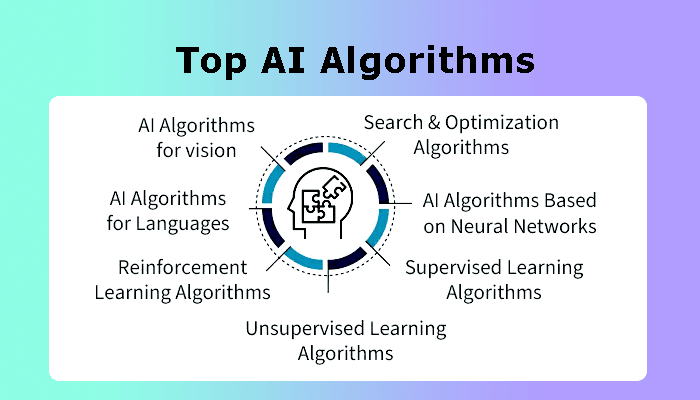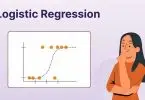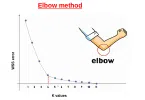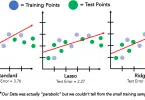Al Intelligence is powered by a diverse set of algorithms, each with unique strengths. Understanding which algorithm to use is key to building effective solutions. Here’s a detailed guide to some of the most essential AI algorithms.
Supervised Learning
Supervised learning algorithms are trained on labeled datasets, meaning each data point has an associated output or “label.” The model learns to map input features to the correct output, making it ideal for tasks where you want to predict a specific value or category.
- Linear Regression: This algorithm predicts a continuous numerical value by finding the best-fitting straight line through the data points. It works by minimizing the distance between the line and the data points, a process often done using the least-squares method.
- Use-Cases: Predicting house prices. By analyzing features like square footage, number of bedrooms, and location, the model can predict the sale price.
- Logistic Regression: Unlike linear regression, this algorithm is used for classification tasks, predicting the probability of an outcome belonging to one of two classes (e.g., yes/no, 0/1). It uses a logistic function (or sigmoid function) to transform its output into a probability score.
- Use-Cases: Spam email classification. The model analyzes features of an email (e.g., keywords, sender, subject line) to classify it as either “spam” or “not spam.”
- Decision Trees: This algorithm makes decisions by creating a tree-like model of choices. It partitions the data into subsets based on the most significant feature at each step, creating a branching structure that leads to a final prediction.
- Use-Cases: Customer churn prediction. A decision tree can evaluate factors like a customer’s usage history, subscription type, and support interactions to predict the likelihood they will cancel their service.
- Random Forest: This is an ensemble learning method that builds multiple decision trees during training and merges their outputs to get a more accurate and stable prediction. It reduces the risk of overfitting by introducing randomness.
- Use-Cases: Stock price prediction. By combining the insights of many individual trees, a random forest can better handle the complexity and volatility of financial data to forecast stock movements.
- Gradient Boosting: Another powerful ensemble technique, gradient boosting builds models sequentially. Each new model corrects the errors made by the previous ones, iteratively improving the overall prediction. It’s highly effective for structured data.
- Use-Cases: Credit scoring for loan approval. This algorithm can analyze numerous features like income, debt-to-income ratio, and credit history, building a highly accurate model to assess a borrower’s creditworthiness.
- K-Nearest Neighbors (KNN): This is a non-parametric, lazy learning algorithm that classifies a new data point based on the majority class of its ‘K’ nearest neighbors in the training dataset. The value of K is a key parameter that determines how many neighbors to consider.
- Use-Cases: Movie recommendation systems. By finding users with similar viewing habits (their “neighbors”), a KNN model can suggest movies that those similar users liked but the current user hasn’t seen yet.
- Naive Bayes: Based on Bayes’ theorem, this algorithm assumes that the features used for classification are independent of each other (a “naive” assumption, but often effective). It calculates the probability of a data point belonging to a certain class.
- Use-Cases: Text classification. It’s widely used in tasks like sentiment analysis, where it can quickly classify a sentence as positive or negative by analyzing the probability of certain words appearing in each category.
- Support Vector Machines (SVM): This algorithm finds the optimal hyperplane that best separates different classes in the feature space. The goal is to maximize the margin between the classes, which leads to better generalization on unseen data.
- Use-Cases: Handwriting recognition. SVMs can be trained on a dataset of handwritten digits to identify and classify them by finding the best boundary lines between the different digit clusters.
Unsupervised Learning
Unsupervised learning algorithms work with unlabeled data and are used to discover hidden patterns or intrinsic structures within the data. The model is not given a correct output; it finds patterns on its own.
- K-Means Clustering: This algorithm partitions data points into K distinct clusters by iteratively assigning each point to the cluster with the nearest mean (centroid) and then recalculating the centroid.
- Use-Cases: Customer segmentation. Businesses can group customers with similar purchasing behaviors, demographics, or interests to create targeted marketing campaigns.
- Principal Component Analysis (PCA): This is a dimensionality reduction technique that transforms data into a new set of dimensions (principal components) that capture the most variance in the data. It’s used to simplify complex datasets.
- Use-Cases: Image compression. By reducing the number of dimensions (pixels or features) in an image while retaining most of the important information, PCA can significantly reduce file size without a noticeable loss of quality.
- Gaussian Mixture Model (GMM): This algorithm is a probabilistic model that represents the distribution of data points as a mixture of several Gaussian (bell-shaped) distributions. It’s more flexible than K-Means as it can handle clusters of different shapes and sizes.
- Use-Cases: Anomaly detection in network security. A GMM can model the “normal” behavior of a network and then flag any data traffic that doesn’t fit within those distributions as a potential security threat.
- Association Rule Learning: This technique is used to find interesting relationships or “if-then” rules among variables in large datasets. It is most famous for its use in market basket analysis.
- Use-Cases: Market basket analysis. Retailers use this to discover what products are frequently purchased together, like “if a customer buys diapers, they are likely to also buy wipes.” This insight helps with store layout and product placement.
Deep Learning & Neural Networks
Deep learning is a subset of machine learning that uses neural networks with multiple layers to learn from data. These algorithms are especially powerful for complex tasks like image and speech recognition.
- Neural Networks: Modeled after the human brain, these networks consist of interconnected “neurons” organized in layers. They learn by adjusting the connections (weights) between neurons as they process data, allowing them to find complex patterns.
- Use-Cases: Facial recognition. A neural network can analyze a person’s facial features and compare them against a database to identify them, a process used in phone security and surveillance.
- Recurrent Neural Networks (RNN): These networks are designed to handle sequential data by using a “memory” that allows information from previous steps to influence the current step. They’re great for tasks where the order of data matters.
- Use-Cases: Sentiment analysis in text. An RNN can read a sentence word by word, using the context of previous words to understand the overall sentiment (positive, negative, or neutral).
- Long Short-Term Memory (LSTM): A specialized type of RNN, LSTMs are designed to remember information for longer periods, overcoming the vanishing gradient problem that plagues traditional RNNs. This makes them ideal for complex, long-sequence data.
- Use-Cases: Stock market prediction. LSTMs can analyze long sequences of historical stock prices and trading volumes to identify trends and predict future movements.
- Word Embeddings: This is a technique for representing words as dense vectors in a continuous vector space. Words with similar meanings are located closer together in this space. They provide a more nuanced representation of words than traditional methods.
- Use-Cases: Improving search engine relevance. By understanding the contextual meaning of words, word embeddings help search engines return more relevant results even if a user’s query doesn’t contain the exact keywords.
Optimization & Other Techniques
These algorithms are often used to solve complex problems by finding the best possible solution from a vast number of options.
- Genetic Algorithms: Inspired by the process of natural selection and genetics, this algorithm uses concepts like mutation, crossover, and selection to find optimal solutions to complex problems by evolving a population of potential solutions.
- Use-Cases: Optimizing supply chain logistics. A genetic algorithm can find the most efficient routes for delivery trucks, minimizing fuel costs and delivery times by considering a massive number of variables and constraints.
- Ant Colony Optimization: This algorithm is a probabilistic technique inspired by how ants find the shortest path from their colony to a food source. It uses a “pheromone” trail to mark good paths, which subsequent “ants” are more likely to follow.
- Use-Cases: Solving the traveling salesman problem. The algorithm can find the shortest possible route that visits a list of cities and returns to the origin city, a classic optimization challenge.
- Reinforcement Learning: This type of learning involves an agent learning to make optimal decisions in an environment by receiving rewards for good actions and penalties for bad ones. It learns through trial and error.
- Use-Cases: Game playing (e.g., AlphaGo). The AlphaGo agent learned to play the game of Go by playing against itself millions of times, improving its strategy with each game by learning which moves led to a victory.
- Natural Language Processing (NLP): This is a broad field of AI focused on the interaction between computers and human language. While not a single algorithm, it encompasses many techniques like tokenization, parsing, and semantic analysis.
- Use-Cases: Chatbots for customer support. NLP allows chatbots to understand a user’s typed or spoken queries and provide relevant responses, automating customer service interactions.






Leave a Comment